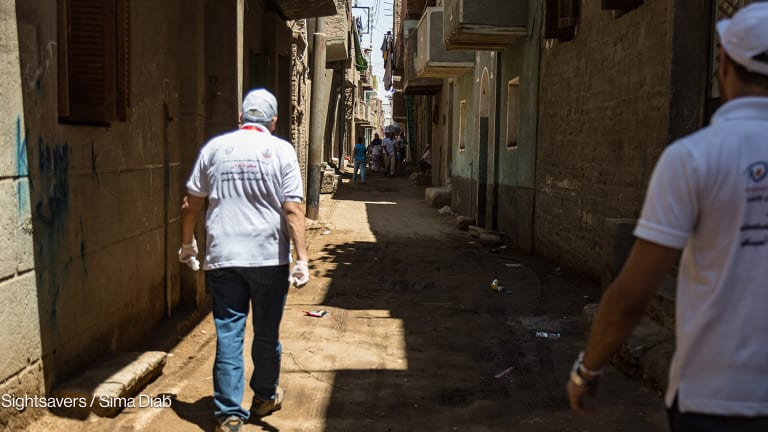
In so many places where I’ve worked across Africa — from Ethiopia to Mali to the Democratic Republic of the Congo — an affliction that was once familiar across the United States but now just a memory still causes illness and disability for too many children and families: intestinal worms.
An average intestinal worm infection can mean that hundreds of worms are in a child’s belly, robbing them of their ability to grow, learn and live to their full potential. Intestinal worms cause anemia, malnutrition, and stunted growth. Yet intestinal worms and other neglected tropical diseases are so common that many people I’ve spoken to consider them normal parts of life.
More than 1 billion people — primarily the poorest of the poor — are affected by these diseases globally. That’s more than three times the entire population of the United States.
Neglected tropical diseases should not be a “normal” or “expected” part of anyone’s life. Luckily, in today’s world, they need not be. As a long-standing supporter of efforts to control and eliminate NTDs, I know that with continued investment, we can ensure no one, regardless of where they live, suffers from these diseases.
We can prevent and treat NTDs for very little money. This is in large part thanks to the biggest drug donation program in history, which backs NTD efforts and has pledged to meet demand through the end of the decade. In 2015 alone, pharmaceutical companies donated more than 1.5 billion treatments.
3 ways to tackle NTDs:
Invest in delivery: The global development community can help ensure that everyone at risk of NTDs receives treatment — through direct programming, funding, partnership and advocacy
Integrate programs: Strong health systems, better data sharing between sectors, and improvements to water, sanitation and health will all help the fight against NTDs. Specifically, as community health worker programs scale up globally, NTD education can be included in the standard curriculum.
Community ownership: In places where NTD are adequately controlled or eliminated, families and individuals have taken proactive responsibility for their own treatment. Moms can make sure their own kids are dewormed. Teachers can ensure that disease prevention is part of the regular curriculum. And good sanitation and hygiene practices can become part of the cultural norm.
Of course, having drugs available is one thing. Reaching the people who need them is another. Around the world, countries and partners are making considerable progress on this front, moving us closer and closer toward eliminating NTDs.
In Ethiopia, for instance, where I most recently visited, strong private-public partnerships coupled with Ethiopian government leadership laid the foundation for a recent scale-up of NTD efforts. In 2013, the country launched its national NTD plan, catalyzing a massive and successful coordination effort. Since then, the Ministry of Health spearheaded countrywide mapping for trachoma, the leading cause of infectious blindness worldwide. This allowed partners to reach more than 50 million people with trachoma services. The END Fund also supported national mapping of lymphatic filariasis, a disfiguring and disabling mosquito-borne disease. Ethiopia has also put people and money in place to address nearly all of its at-risk populations for the most common NTDs.
Progress like this is occurring around the world. A report released today by the Uniting to Combat NTDs coalition illustrates global progress against NTDs since January 2012. That’s when a coalition of partners including pharmaceutical companies, donors and endemic-country governments signed the London Declaration, committing to controlling, eliminating or eradicating 10 NTDs. Four years later, we’ve never been in better positioned to eliminate NTDs: The overall number of people in need of NTD treatment has decreased by 230 million, more people than ever are being reached with the services they need, and countries are achieving their control and elimination goals.
As the world gets closer to defeating these diseases, programs are getting smarter tracking them down. Disease maps are becoming more thorough, providing crucial information on who is at risk for different NTDs and where they live. Scientists are learning more about how we can tackle several diseases at the same time. This allows governments and partners to strategically direct resources to ensure every dollar has maximum value.
All this makes me hopeful. But there are real challenges. NTDs affect some of the most remote communities and reaching these populations with the care they need is no easy feat. As new tools, new commitments and ongoing drug donations bring us closer to our goals, providing much-needed financial and political support to these efforts will be crucial.
I invite everyone to join this growing movement working to transform millions of lives and create a legacy that will transform the poorest communities for years to come. We can see the end of NTDs and help create a world in which no one considers these diseases an “expected” part of life.
Join the Devex community and access more in-depth analysis, breaking news and business advice — and a host of other services — on international development, humanitarian aid and global health.








